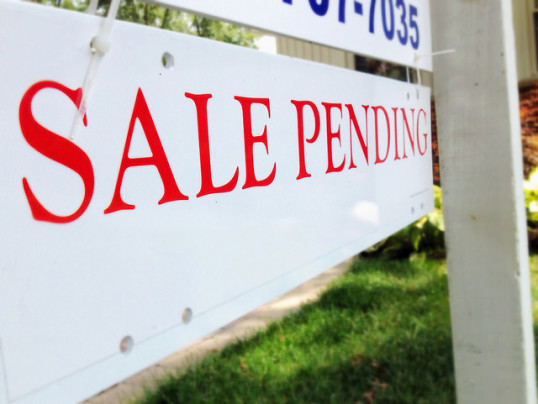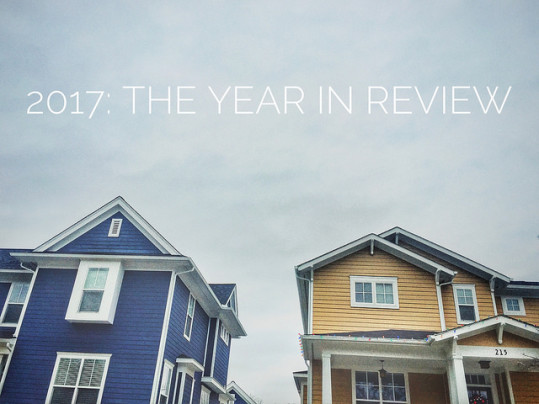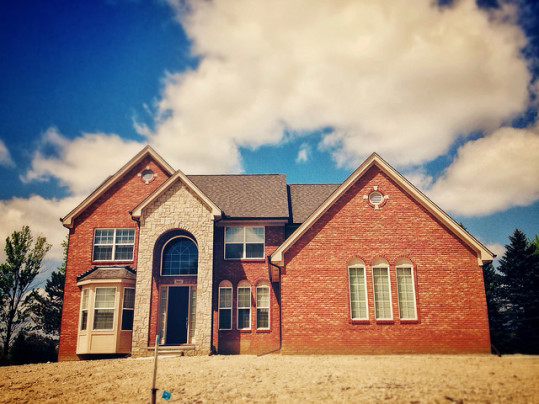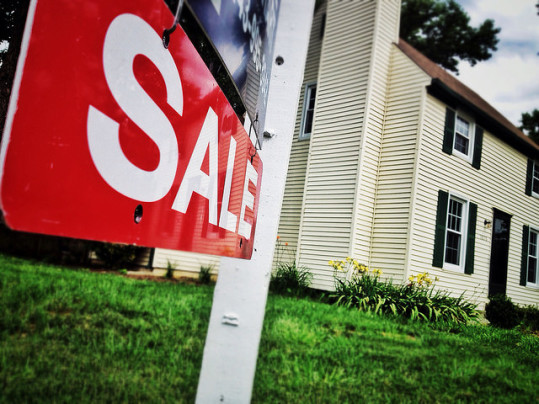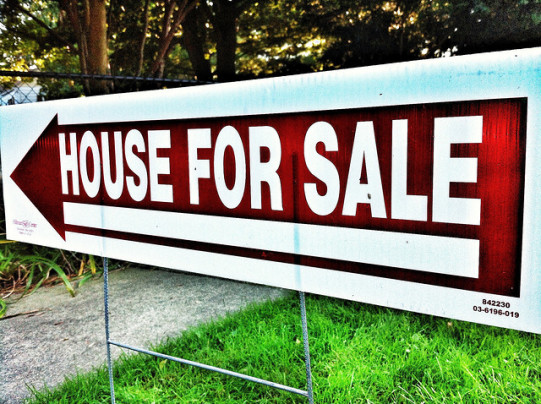Perhaps you’ve never thought about how much all the homes in the country would cost if their values were totaled. But, according to recently released data from Zillow, that number is now $31.8 trillion – and that’s up $2 trillion from the year before. Zillow senior economist Aaron Terrazas says the national housing stock hit record heights in 2017. “Strong demand from buyers and the ongoing inventory shortage keep pushing values higher, especially in some of the nation’s booming coastal markets,” Terrazas said. In fact, the New York and Los Angeles markets alone account for more than 8 percent of the value of all U.S. housing. According to the report, each are now worth more than $2.5 trillion. Among the cities seeing the most rapid growth, Columbus led the way, with a 15.1 percent increase – though San Jose, Dallas, Seattle, Tampa, Las Vegas, and Charlotte also grew by more than 10 percent over the past year. More here.
Archive for December 2017
Strengthening Market Raises Questions For 2018
Recent real estate data has revealed a strengthening housing market. In fact, both new and existing home sales were better than expected in November and new estimates from the National Association of Realtors show contract signings up as well. The NAR’s Pending Home Sales Index – which measures contracts to buy homes rather than closings – was up only slightly in November but hit its highest reading since June. Lawrence Yun, NAR’s chief economist, said the housing market is getting stronger. “The housing market is closing the year on a stronger note than earlier this summer, backed by solid job creation and an economy that has kicked into a higher gear,” Yun said. However, Yun also cautions that, though there is growing demand for homes, low inventory levels remain a big question for next year’s home buyers. If more homes become available for sale, next year’s market could grow even stronger – as more homes for sale will help improve affordability conditions for buyers. More here.
Year End Recap Finds 2017 Best In A Decade
Reading real-estate news can sometimes give you the impression that there are nothing but challenges in today’s market. Inventory shortages and rising prices dominate the headlines and can make it appear as though prospective home buyers are in a tough spot. And yet, Freddie Mac’s year-end recap says the housing market just had its best year in a decade. In fact, the report highlights a number of positive developments that have helped propel the market. Among them, a stronger economy and job growth lead the way. Americans are feeling more confident in their financial situation, which makes them more likely to consider buying a house. Renewed confidence, along with lower-than-normal mortgage rates, has helped balance out some of the affordability challenges that exist in certain markets. Overall, consistent buyer demand and rising optimism have led to a high level of buyer demand. Freddie Mac predicts this will help accelerate new home construction, which may moderate price increases next year. In short, today’s market offers potential buyers some reason for encouragement. More here.
Skyrocketing New Home Sales Beat Expectations
New home sales are an important barometer for the housing market for a number of reasons. For one, the more new homes that sell, the more new homes builders will build. And, as more new homes get added to the number of homes for sale, home prices will begin to moderate, as there are more homes for buyers to choose from. In other words, new home sales affect anyone buying or selling a home, regardless of whether they’re specifically interested in a newly built home. Because of that, news that new home sales rose 17.5 percent in November is encouraging for potential buyers and sellers interested in getting into the market in the coming months. That’s because strained affordability conditions will be helped by an increase in the number of new homes being sold and, even more importantly, the number of new homes that are built in the coming year. The monthly improvement also far exceeded economists’ expectations. In fact, economists polled by Reuters had predicted sales would fall 4.7 percent. More here.
Home Sales Reach Strongest Pace Since 2006
Sales of previously owned homes rose for the third straight month in November, according to new numbers from the National Association of Realtors. The improvement put home sales at their strongest pace since 2006 and 3.8 percent above where they were at this time last year. Lawrence Yun, NAR’s chief economist, says the economy is fueling increased interest in buying a home. “Faster economic growth in recent quarters, the booming stock market, and continuous job gains are fueling substantial demand for buying a home as 2017 comes to an end,” Yun said. However, despite the overall improvement, there are still a lower-than-usual number of first-time home buyers active in the market. This is primarily due to the fact that there are more homes available for sale at the high end of the market than in the more affordable price ranges popular with new buyers. Yun says new construction is the answer. “The increase in homebuilder optimism must translate to significantly more new construction in 2018 to help ease these acute inventory shortages,” he said. More here.
Mortgage Applications Stall Despite Rate Drop
According to the Mortgage Bankers Association’s Weekly Applications Survey, average mortgage rates fell last week for 30-year fixed-rate mortgages, loans backed by the Federal Housing Administration, and 15-year fixed-rate loans. Rates for jumbo loans increased from the previous week. Despite favorable rates, however, total demand for mortgage applications was down nearly five percent. Joel Kan, an MBA economist, told CNBC there are a couple of reasons application demand may have slowed – including news of the tax plan moving through congress. “The seasonal slowdown is certainly a key factor, but it could be that some buyers wanted to see the fine print of the bill before making a commitment, and that led to a pullback,” Kan said. Whatever the case, demand for loans to buy homes was down six percent from the week before, though it remains one percent higher than it was during the same week last year. The MBA’s weekly survey has been conducted since 1990 and covers 75 percent of all retail residential mortgage applications. More here.
Current Homeowners Say They’re Ready To Buy
The National Association of Realtors’ Housing Opportunities and Market Experience survey asks consumers about buying and selling a home, their financial situation, and their perceptions of the economy. According to the fourth quarter results, Americans are generally optimistic about the housing market, with majorities expressing that they feel now is both a good time to be selling a home and a good time to buy a home. However, some groups are more optimistic than others. For example, among current homeowners, 79 percent say they feel it is a good time to buy a home. On the other hand, just 60 percent of current renters feel as optimistic. Other groups that were more optimistic included those with household incomes above $100,000 and those living in the Midwest and South. So what do the results mean? Well, one takeaway is that an increasing number of current homeowners who want to move could mean a potential boost in the number of homes available for sale next year. That’s good news for all prospective home buyers, as an increase in for-sale inventory will help improve affordability conditions. More here.

